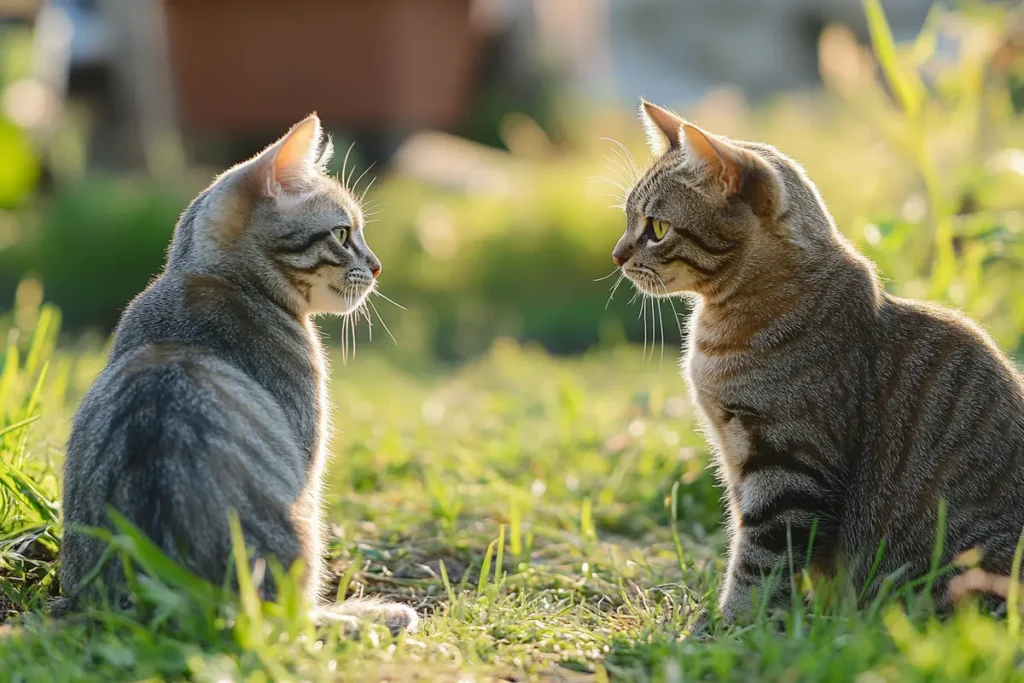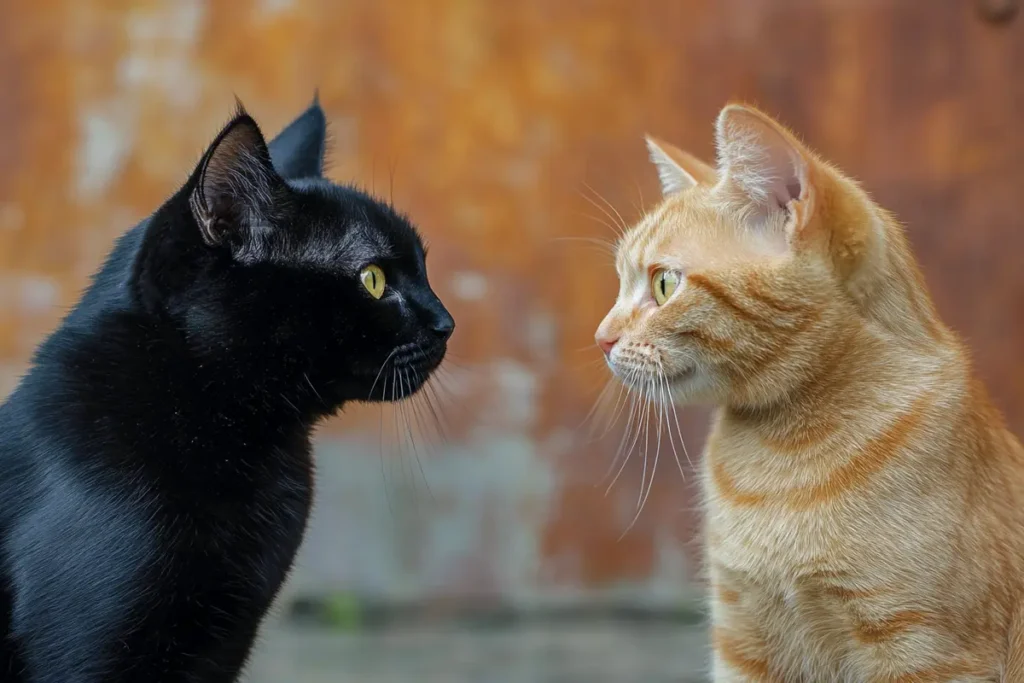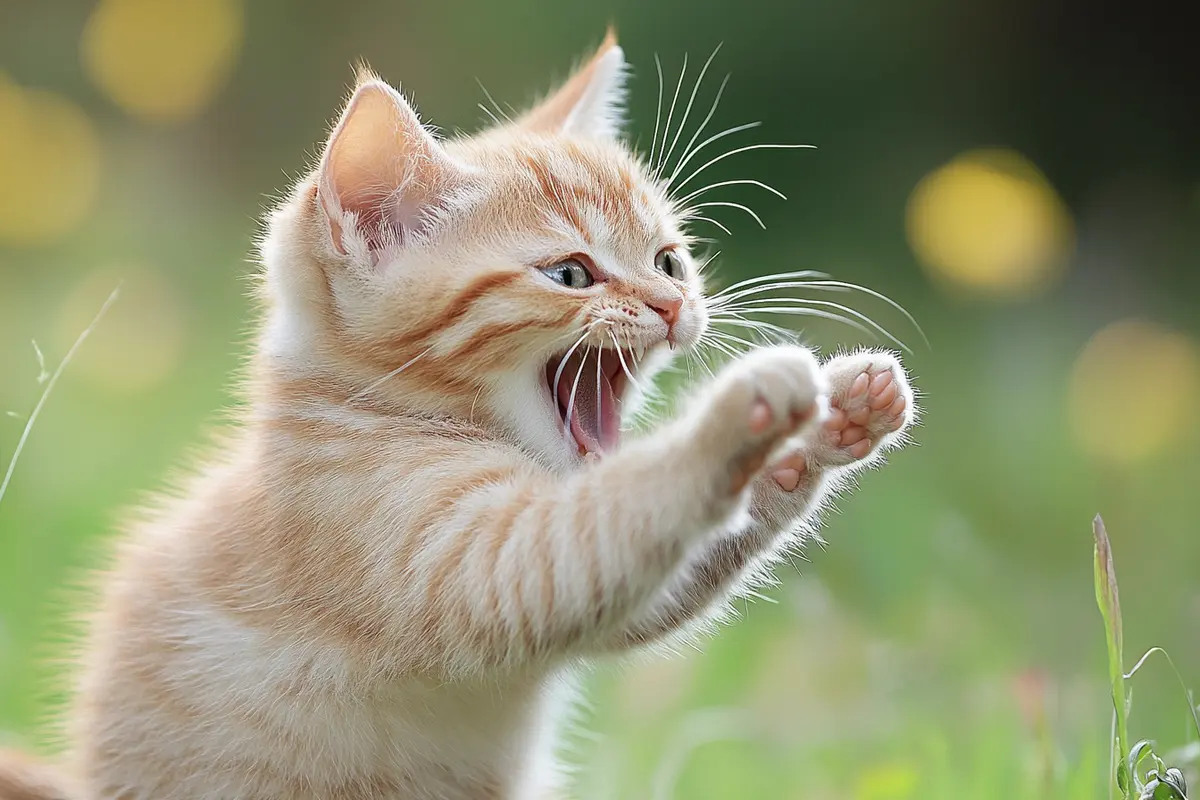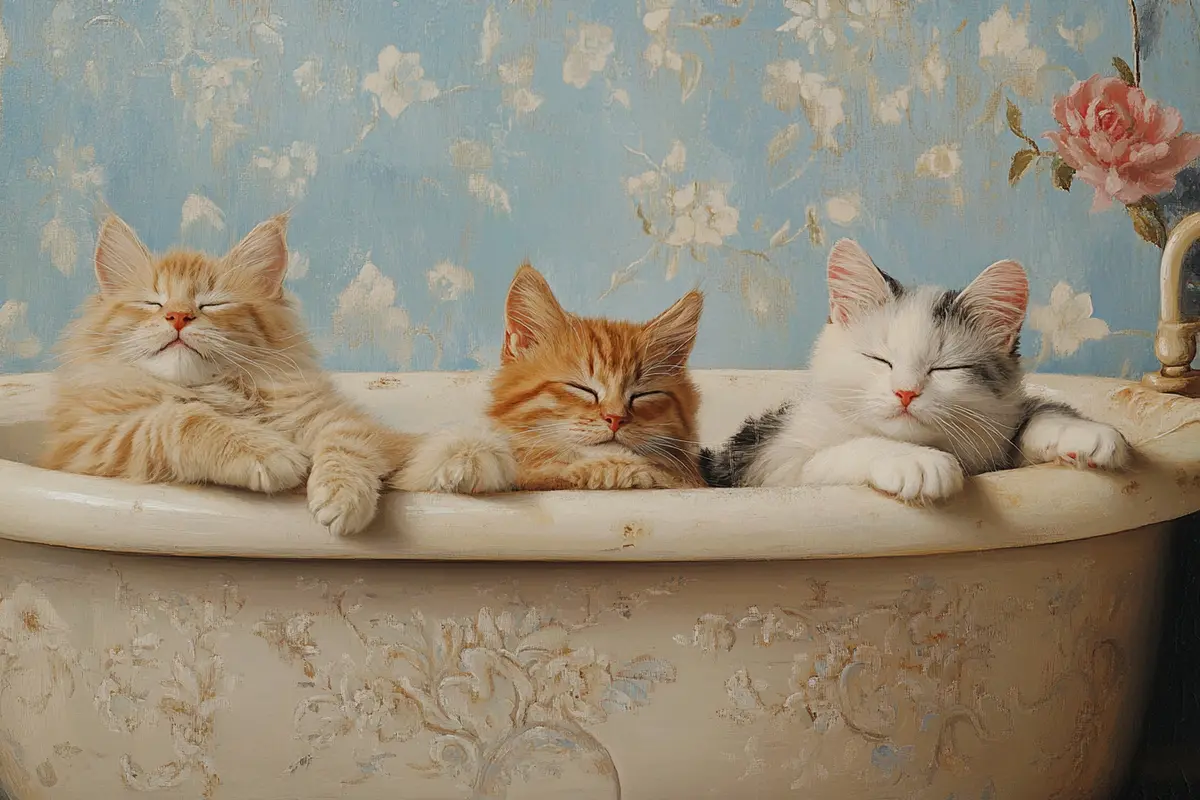Understanding cat behavior is key to a happy life with your feline friend. This article explores feline body language, instincts, and territorial traits. Learn how to interpret your cat’s actions.
Table of Contents
Decoding Feline Communication: Body Language
Cats communicate in many ways. Their body language offers crucial insights. Understanding these cues helps improve our interaction. Therefore, observing their tails, ears, and vocalizations can be very informative. You might also like Gentle Guide to Understanding 7 Cat Breeds
Interpreting Tail Movements
A cat’s tail is a great indicator of their mood. A tail held high often means they are happy. Furthermore, a swishing tail can suggest agitation. A puffed-up tail, on the other hand, usually indicates fear or aggression. Moreover, a relaxed tail indicates a calm cat. Therefore, carefully watch your cat’s tail movements for clues.
Understanding Ear Positions
Cat ears also reveal emotions. For example, forward-facing ears mean a relaxed or attentive cat. Ears flattened against their head, however, indicate fear or aggression. Ears that swivel often indicate the cat is listening to different sounds. Therefore, these clues are essential to understanding cat behavior.
Vocalizations: Meows, Purrs, and Hisses
Cats use different vocalizations to express themselves. Meows are usually directed at humans, while purrs often suggest contentment. However, purring can also be a sign of self-soothing. Hissing, conversely, is a clear warning sign. Consequently, understanding these different sounds is very important.
Natural Instincts in Cat Behavior
Cats are naturally driven by their instincts. These instincts influence much of their behavior. For example, hunting, scratching, and climbing are deeply ingrained behaviors. Therefore, understanding these instincts can help you create a suitable environment.
The Hunting Instinct
The hunting instinct is a core aspect of cat behavior. Even well-fed cats will engage in play that mimics hunting. This often involves stalking, chasing, and pouncing. Furthermore, providing play opportunities fulfills this instinct. Consequently, using toys that simulate prey is a great option.
The Need to Scratch
Scratching is a natural and healthy cat behavior. Cats scratch to maintain their claws. Also, they scratch to mark their territory. Therefore, providing appropriate scratching posts can save your furniture. Furthermore, different materials such as cardboard or sisal, are usually preferred.
The Urge to Climb
Climbing is another natural instinct for cats. They climb to explore and feel secure. A cat tree can offer an outlet for this behavior. Moreover, vertical space is very important for their wellbeing. Therefore, providing varied climbing options is important.

Territorial Nature of Cats
Cats are highly territorial animals. They mark their territory in different ways. For example, scent marking, scratching, and rubbing are common practices. Understanding these territorial behaviors can be helpful. Additionally, it is important to provide them with enough space to feel comfortable. You might also like Essential Cat Care Tips for Beginners: A Complete Guide
Scent Marking
Scent marking is a key part of cat territory. Cats use glands on their face, paws, and tail to deposit their scent. These scents act as a form of communication. Furthermore, this helps to inform other cats of their presence. Therefore, allow cats to have their own space for scent marking.
Scratching as Territory Marking
Scratching isn’t just for claw maintenance. Additionally, it’s also used to mark territory. The visible scratches and the scent left from the paw pads act as territorial markers. Consequently, this explains why they choose specific spots to scratch.
Rubbing and Territory
Cats rub against objects and people to mark them with their scent. This behavior creates a feeling of familiarity. Therefore, it’s a sign of affection as well as territorial behavior. Also, it is their way of claiming something as part of their space.
Understanding Specific Cat Behaviors
Besides basic communication and instincts, cats have many specific behaviors. Understanding these can improve your bond with your cat. Additionally, it helps you provide better care. Consequently, it is important to recognize and address these needs.
Grooming Habits
Cats are very meticulous groomers. This behavior helps to keep their fur clean and healthy. Additionally, it helps them regulate their body temperature. Furthermore, grooming is also a calming activity. Therefore, regular grooming sessions can help reduce stress.
Playtime Preferences
Cats enjoy a variety of play activities. Some prefer chasing toys, while others prefer interactive games. Understanding your cat’s playtime preferences is key. Consequently, this can enhance your relationship. Provide toys that cater to your cat’s interests to keep them active and entertained.
Sleep Patterns
Cats typically sleep a lot, often around 12-16 hours per day. Sleep patterns may vary between cats. However, they are generally more active during dawn and dusk. Therefore, it is important to provide them with a comfortable and secure place to rest. Also, respect their need for sleep.
The Importance of Environmental Enrichment
Creating a stimulating environment is very important. A well-enriched environment can prevent boredom. Additionally, it helps reduce behavioral issues. Furthermore, it is important to provide different types of enrichment. This includes climbing structures, toys, and scratching posts.
Vertical Space and Exploration
Cats love to climb and explore. Vertical space is important for their wellbeing. Cat trees and shelves offer safe ways for them to explore. Additionally, they feel safer when they are higher up. Therefore, vertical space is essential for a happy cat.
Interactive Toys
Interactive toys are very important to keep cats entertained. They stimulate their hunting instincts. Additionally, they help create mental stimulation. Moreover, this can prevent boredom. Therefore, choose toys that your cat finds engaging.
Scratching Posts and Furniture Protection
Providing the correct scratching posts can save your furniture. Cats will scratch. Therefore, it is best to give them an appropriate place to do so. Consequently, providing several options in different materials can help protect your home.

Addressing Common Behavioral Issues
Even with good care, cats can develop behavioral issues. Understanding why these behaviors occur is essential. Addressing the root cause of the issue is often necessary. Furthermore, early intervention can prevent them from escalating.
Aggression
Aggression can stem from different things. For example, it can stem from fear, pain, or territorial disputes. Identifying the trigger is the first step. Therefore, always consult with a vet or a behaviorist for help. Additionally, proper training methods are necessary.
Litter Box Issues
Litter box issues are common. It could be due to stress, health problems, or a dirty litter box. Always keep the litter box clean and accessible. Additionally, ensure you use the right type of litter for your cat. If the problem continues, seek advice from a vet.
Excessive Meowing
Excessive meowing could mean a variety of things. It might be because they are hungry, bored, or seeking attention. Moreover, older cats may meow due to cognitive decline. Therefore, paying attention to when and why your cat is meowing can help.
Conclusion: Building a Stronger Bond
Understanding cat behavior is an ongoing journey. This requires patience and observation. By learning their language and needs, you can build a stronger bond. Furthermore, you can ensure a happier, healthier life together. Therefore, always make an effort to understand your feline friend.




